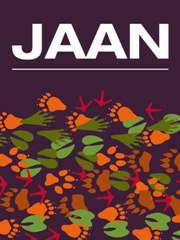Crossref Citations
This article has been cited by the following publications. This list is generated based on data provided by
Crossref.
Abdollahi, M. R.
Zaefarian, F.
Gu, Y.
Xiao, W.
Jia, J.
and
Ravindran, V.
2018.
Influence of soybean bioactive peptides on performance, foot pad lesions and carcass characteristics in broilers.
Journal of Applied Animal Nutrition,
Vol. 6,
Issue. ,
Osho, S O
Xiao, W W
and
Adeola, O
2019.
Response of broiler chickens to dietary soybean bioactive peptide and coccidia challenge.
Poultry Science,
Vol. 98,
Issue. 11,
p.
5669.
Salavati, Mohammad Ebrahim
Rezaeipour, Vahid
Abdullahpour, Rohullah
and
Mousavi, Naser
2020.
Effects of Graded Inclusion of Bioactive Peptides Derived from Sesame Meal on the Growth Performance, Internal Organs, Gut Microbiota and Intestinal Morphology of Broiler Chickens.
International Journal of Peptide Research and Therapeutics,
Vol. 26,
Issue. 3,
p.
1541.
Ikusika, Olusegun O.
Falowo, Andrew B.
Mpendulo, Conference T.
Zindove, Titus J.
and
Okoh, Anthony I.
2020.
Effect of strain, sex and slaughter weight on growth performance, carcass yield and quality of broiler meat.
Open Agriculture,
Vol. 5,
Issue. 1,
p.
607.
Landy, Nasir
Kheiri, Farshid
and
Faghani, Mostafa
2020.
Evaluation of cottonseed bioactive peptides on growth performance, carcase traits, immunity, total antioxidant activity of serum and intestinal morphology in broiler chickens.
Italian Journal of Animal Science,
Vol. 19,
Issue. 1,
p.
1375.
Mohammadrezaei, Mohammad
Navidshad, Bahman
and
Gheisari, Abasali
2020.
Effect of Different Levels of Cottonseed Meal Bioactive Peptides on Production Efficiency and Serum Antioxidant Activity of Broiler Chickens.
Research on Animal Production,
Vol. 11,
Issue. 30,
p.
83.
Sholikin, M M
Alifian, M D
Wahyudi, A T
Jayanegara, A
and
Nahrowi
2020.
Evaluation of Linear Models and Linear Mixed Models to Predict the Effects of Antimicrobial Peptides on Broiler Performance.
IOP Conference Series: Earth and Environmental Science,
Vol. 478,
Issue. 1,
p.
012002.
Zhuo, Yong
Cao, Meng
Li, Yan
Tang, Ling
Li, Wentao
Jiang, Xiaojun
Xiao, Weiwei
Liu, Sen
Jiang, Xuemei
Fang, Zhengfeng
Che, Liangqiang
Xu, Shengyu
Feng, Bin
Li, Jian
Lin, Yan
and
De, Wu
2020.
Soybean bioactive peptides supplementation during late gestation and lactation affect the reproductive performance, free amino acid composition in plasma and milk of sows.
Livestock Science,
Vol. 237,
Issue. ,
p.
104064.
Alagawany, Mahmoud
Elnesr, Shaaban S.
Farag, Mayada R.
Abd El-Hack, Mohamed E.
Barkat, Rasha A.
Gabr, Amr A.
Foda, Manar A.
Noreldin, Ahmed E.
Khafaga, Asmaa F.
El-Sabrout, Karim
Elwan, Hamada A.M.
Tiwari, Ruchi
Yatoo, Mohd Iqbal
Michalak, Izabela
Di Cerbo, Alessandro
and
Dhama, Kuldeep
2021.
Potential role of important nutraceuticals in poultry performance and health - A comprehensive review.
Research in Veterinary Science,
Vol. 137,
Issue. ,
p.
9.
Salavati, Mohammad Ebrahim
Rezaeipour, Vahid
Abdullahpour, Rohullah
and
Mousavi, Seyed Naser
2021.
Bioactive Peptides from Sesame Meal for Broiler Chickens: Its Influence on the Serum Biochemical Metabolites, Immunity Responses and Nutrient Digestibility.
International Journal of Peptide Research and Therapeutics,
Vol. 27,
Issue. 2,
p.
1297.
Landy, Nasir
and
Kheiri, Farshid
2021.
Evaluation of cottonseed bioactive peptides supplementation on performance, egg quality, and total antioxidant activity of serum in laying hens.
Bulletin of the National Research Centre,
Vol. 45,
Issue. 1,
Mohammadrezaei, Mohammad
Navidshad, Bahman
Gheisari, Abbasali
and
Toghyani, Mehdi
2021.
Cottonseed Meal Bioactive Peptides as an Alternative to Antibiotic Growth Promoters in Broiler Chicks.
International Journal of Peptide Research and Therapeutics,
Vol. 27,
Issue. 1,
p.
329.
Zhao, Xiyu
Zhang, Yao
He, Wentao
Wei, Yuanhang
Han, Shunshun
Xia, Lu
Tan, Bo
Yu, Jie
Kang, Houyang
Ma, Mengen
Zhu, Qing
Yin, Huadong
and
Cui, Can
2022.
Effects of Small Peptide Supplementation on Growth Performance, Intestinal Barrier of Laying Hens During the Brooding and Growing Periods.
Frontiers in Immunology,
Vol. 13,
Issue. ,
Bahadori, Mohammad Mehdi
Rezaeipour, Vahid
Abdullahpour, Rohullah
and
Irani, Mehrdad
2022.
Effects of sesame meal bioactive peptides, individually or in combination with a mixture of essential oils, on growth performance, carcass, jejunal morphology, and microbial composition of broiler chickens.
Tropical Animal Health and Production,
Vol. 54,
Issue. 4,
Liu, Jiancheng
Luo, Yuanqin
Zhang, Xiaoyang
Gao, Yan
and
Zhang, Wenju
2022.
Effects of bioactive peptides derived from cottonseed meal solid‐state fermentation on the growth, metabolism, and immunity of yellow‐feathered broilers.
Animal Science Journal,
Vol. 93,
Issue. 1,
Tolba, Samar A.
Amer, Shimaa A.
Gouda, Ahmed
Osman, Ali
Sherief, Wafaa R. I. A.
Ahmed, Amany I.
Abd El-Rahman, Ghada I.
Abdel-Warith, Abdel-Wahab A.
Younis, Elsayed M.
Davies, Simon J.
and
Roushdy, Elshimaa M.
2023.
Potential use of cowpea protein hydrolysate as a dietary supplement in broiler chickens: effects on growth, intestinal morphology, muscle lipid profile, and immune status.
Italian Journal of Animal Science,
Vol. 22,
Issue. 1,
p.
1204.
Bozorgtabar, Parand
Kazemifard, Mohammad
Rezaei, Mansour
and
Mehraban, Pouyan
2023.
Effect of Superworm Bioactive Peptides on Performance, Morphology and Microbial Population of Intestine and Immune Responses in Broiler Chickens.
Research on Animal Production,
Vol. 14,
Issue. 39,
p.
10.
Zhong, Xiaoxia
Lin, Peiwen
Yao, Yanchu
Liu, Zhiyun
Zhou, Xiaorong
Guan, Xiaofeng
and
Huang, Jinxiu
2023.
Effects of dietary supplementation with bioactive peptides derived from rapeseed protein on the growth performance, serum biochemistry and faecal micro‐organism composition of weaned piglets.
Journal of Animal Physiology and Animal Nutrition,
Vol. 107,
Issue. 3,
p.
867.
Sa’adoon, Waleed H.
and
Abbas, Rabia J.
2023.
Effect of Dietary Supplementation of Soybean Bioactive Peptides and Vitamin E on Productive Performance and Some Carcass Characteristics in Broiler Chickens.
IOP Conference Series: Earth and Environmental Science,
Vol. 1262,
Issue. 6,
p.
062035.
Wei, Yimeng
Zhao, Xiyu
Xu, Tao
Liu, Zhenyan
Zuo, Yalan
Zhang, Mingxue
Zhang, Yao
and
Yin, Huadong
2024.
Soybean Bioactive Peptide Supplementation Affects the Intestinal Immune Antioxidant Function, Microbial Diversity, and Reproductive Organ Development in Roosters.
Animals,
Vol. 14,
Issue. 13,
p.
1954.


